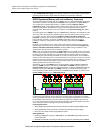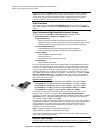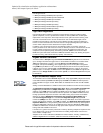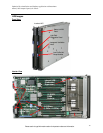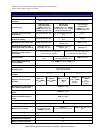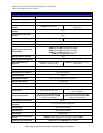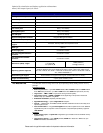
Optimized for virtualization and database applications with maximum
memory and compute capacity in a blade
Please see the Legal Information section for important notices and information.
11.
BladeCenter Chassis
IBM’s blade architecture offers five choices of compatible and interoperable chassis in which to
use various blade servers. Each chassis serves different customer needs. The BladeCenter S is
a small, entry-level chassis designed for office environments. The original chassis (refreshed
with the latest Advanced Management Modules and power supply modules) offers maximum
density, great flexibility and a wide variety of expansion options at an entry-level price. The next-
generation BladeCenter H chassis offers all of BladeCenter’s capabilities, and adds high-
performance features, including 10Gb fabric support. If you need a ruggedized chassis (for
example, government/military or telecom), BladeCenter T offers special features optimized for
those environments. The next-generation BladeCenter HT is a high-performance ruggedized
telecommunications platform, also supporting 10Gb fabrics. HX5 is supported in the BladeCenter
H, BladeCenter HT and BladeCenter S chassis.
There is a high degree of interchangeability and compatibility of features among the chassis, and
all of these chassis can be installed in a rack along with other rack-optimized equipment.
See the separate IBM BladeCenter Chassis Product Guide for details.
Advanced Systems Management Capabilities
Each BladeCenter chassis offers a high level of systems management capabilities that are well-
suited to remote locations as well as to stand-alone environments. Features include the
Advanced Management Module (AMM), Integrated Management Module (IMM), IBM
ToolsCenter, Automatic Server Restart, Systems Director Active Energy Manager, Wake on LAN
support, PXE 2.0 support, text and graphics console redirect, Predictive Failure Analysis,
Embedded Dynamic System Analysis, and IBM Systems Director.
The chassis-based AMM, in combination with the HX5 blade server’s IMM, provides industry-
standard Intelligent Platform Management Interface (IPMI) 2.0-compliant systems
management. The AMM provides a number of important system functions, including:
• Monitoring of system and battery voltage, system temperature, fans, power supplies, processor and
DIMM status
• Fan speed control
• Product ID and Family ID detection
• Highly secure remote power on/off
• System reset control
• NMI/SMI detection and generation
• System diagnostic LED control (power, HDD, activity, alerts, heartbeat)
• IPMI over LAN
• Serial Over LAN
• Proxy server support
• LAN messaging and alerting
• VLAN support
• Enhanced authentication and encryption algorithms (RMCP+, AES)
• Local update of IMM firmware
• Firmware firewall
• Support for IPMI v2.0 compliant management software (e.g., xCAT)
• Other mandatory and optional IPMI functions in the blade’s IMM
The IMM, via the management module, alerts IBM Systems Director to anomalous
environmental factors, such as voltage and thermal conditions—even if the server has failed.
Other systems management features offered for the combination of blade server and chassis
include:
• Predictive Failure Analysis for system processors, memory and HDDs, as well as chassis switch
modules, blower modules and power modules
• Web-based out-of-band control
• Latest OS failure screen capture
• Remote virtual media
• High-speed remote redirection of PCI video, keyboard and mouse
• SSL (Secure Socket Layer) and LDAP (Lightweight Directory Access Protocol) support
IBM ToolsCenter consolidates 42 needed tools for managing servers individually into an







